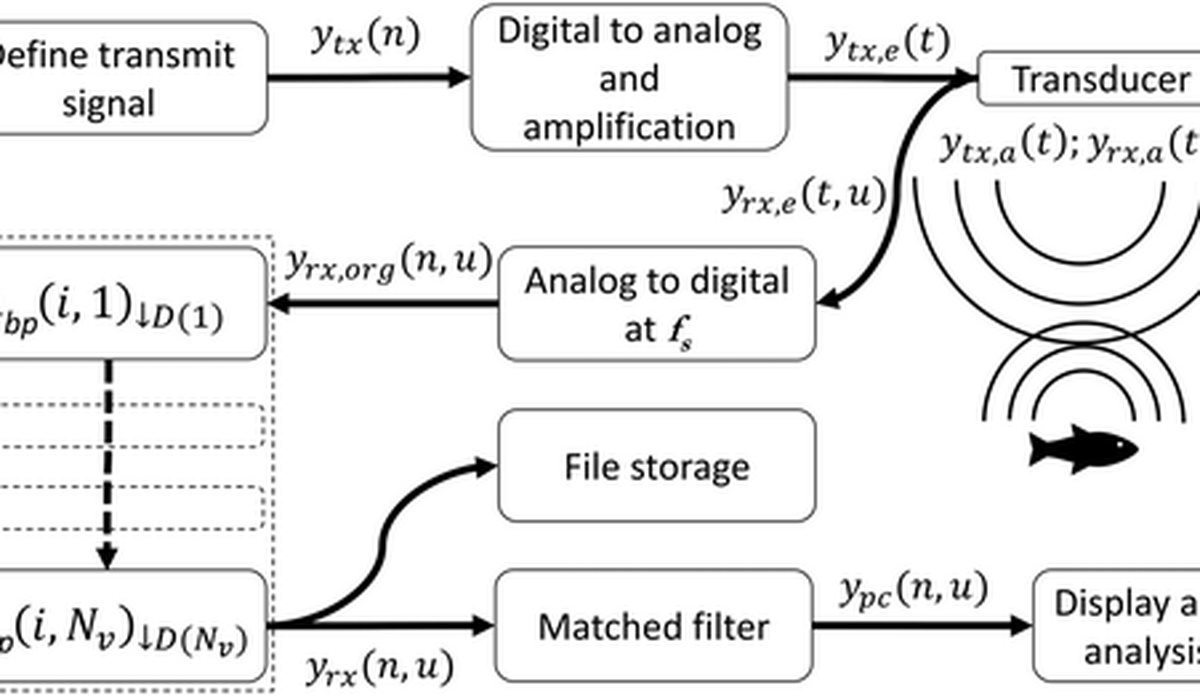
© 2023 The Authors. Methods in Ecology and Evolution published by John Wiley & Sons Ltd on behalf of British Ecological Society.
New paper: “Quantitative processing of broadband data as implemented in a scientific split-beam echosounder” (open access)
Modern scientific broadband echosounders transmit pulses of sound and receive the same pulse after being scattered by e.g. fish, plankton, gas bubbles or the seafloor. In this paper we go through, step-by-step, how the acoustic echo is processed within modern scientific broadband echosounders, exemplified with the the Kongsberg Discovery (SIMRAD) EK80.
The paper is accompanied by a Python code which closely follows the paper, allowing the reader to reproduce each processing step. Our hope is that this will help students and researchers in understanding the steps required to process broadband echosounder data and provide a basis for further development of signal processing and post-processing software.
The full article can be found online:
Andersen, L. N., Chu, D., Handegard, N. O., Heimvoll, H., Korneliussen, R., Macaulay, G. J., Ona, E., Patel, R., & Pedersen, G. (2023). Quantitative processing of broadband data as implemented in a scientific split-beam echosounder. Methods in Ecology and Evolution, 00, 1–12. https://doi.org/10.1111/2041-210X.14261 https://github.com/CRIMAC-WP4-Machine-learning/CRIMAC-Raw-To-Svf-TSf